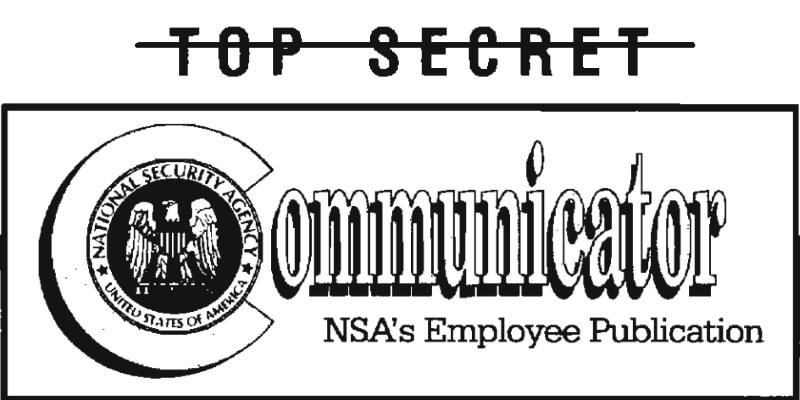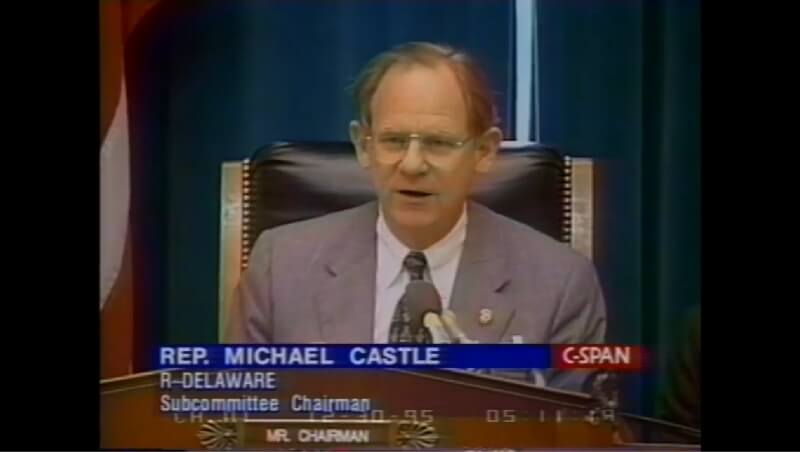
If news goes unnoticed for years, is it still new news, especially if the present brings new perspectives to light? While researching another article I came across an internal NSA document that was written in 1995 and declassified in 2008, not long before the invention of Bitcoin. The document, which is publicly available on the NSA website, is a weekly internal newsletter for NSA employees called Communicator and in it, they discuss the early iterations of digital currencies that were make headway at the time, specifically David Chaum’s Digicash.
It is an bit of digital currency history that has, as far as I am aware, gone unnoticed until now. Far from the kind of document that lays out specific policy for agents the follow, the newsletter talks about digital currencies in a matter of fact way, describing their potential to usher in internet commerce (which was still dealing with security and perception issues at the time) as well as their potential downsides, from the Government’s perspective. Many of those issues will sound familiar to bitcoin advocates.
“Some of you may be aware that one of the big stumbling blocks in using the INTERNET for buying and selling goods and services is the lack of a secure and reliable system to pay for them. Several entrepreneurs have been attempting to develop reliable solutions to this problem. Mark Twain Bankshares of St. Louis recently announced that it would soon offer its customers electronic cash or “E-Cash” services developed by DIGICASH, an Amsterdam company run by cryptography-savvy David Chaum. Initially these services are intended to overcome many of the disadvantages of using credit cards for small dollar transactions, but these same technologies could offer new opportunities to those bent on counterfeiting, money laundering, or electronic theft.”
Bitcoin proponents will recognize many of those same “disadvantages” as issues Bitcoin deals with today. If the document proves one thing, it is that the government has been nothing if not consistent on the digital currency issue. The fears they had, continue to be the fears people in position of authority have today about Bitcoin. Another interesting note, however, is that according to the NSA document, Congress was running hearings on Digital currencies in 1995 and seemed to agree with their assessment that regulating the digital currency space would be “premature.”
That was more than twenty years ago, so it is not a surprise that the government’s position on that seemed to have changed, but at the same time, it is not like there has been twenty years of progress in the digital currency space. Considering the progress that Digicash had already made in 1995, it is not ridiculous to assert that Bitcoin only reached Digicash’s high-water mark recently. Nevertheless, immediately after saying regulation would be premature, they do lay out what kind of regulation they think would be appropriate once the time is right.
“[The subcommittee] suggested Congress might consider requiring these proposed “cyber” systems to show both a demonstrated ability to protect themselves and an ability to assist law enforcement officials when direct or indirect abuse occurs.”
The hearing in question was the second of three hearings on the “Future of Electronic Forms of Money and Electronic Payment Systems” put out by the Banking and Financial Services Subcommittee on Domestic and International Monetary Policy. You can find the entire transcript here. Or, if you are a serious masochist, you can watch the entire event, coming in at over two hours, on C-SPAN’s Archives.
It is worth noting, considering their assertion that digital currency companies be able to help law enforcement when abuses occur, that 1995 was also a big year in the Clipper Chip Wars, in which the NSA wanted to require technology companies to put backdoors into their hardware with a special NSA friendly cryptography chip, called the Clipper Chip. When it was proven that this would inevitably make systems insecure not just from the NSA but also common criminals, the issue was dropped (until more recently) and the Cypherpunks at the time scored a key victory. By 1996, the Clipper Chip project was all but abandoned.
What this shows that, even back in 1995, the government’s position seemed to be that technology companies should be required to sacrifice their customer’s privacy for the government’s efficiency, not just for communications, but financial transactions as well.

Which is what makes Satoshi’s primary invention of decentralization so important. In addition to concerns over money laundering and financing organized crime and terrorism, the government’s primary justification for regulation was ensuring that the digital currency companies (called clearing houses by the government) had significant security in place for their customers. The open-source and decentralized nature of bitcoin made it so that not only can everyone see that the system is safe at all times, but the government would have no one to crack down on even if they had the desire to shut down bitcoin. Satoshi’s invention rendered half of their concerns obsolete.
This is by no means breaking news. But it is a mostly forgotten part of cryptocurrency history and I find it interesting to read the NSA’s thoughts on digital currencies more than two decades before most of us had heard of them. In any case, it is probably a more interesting read than hearing me put in my opinion along with two thousand others, on the Wright-Satoshi debate.
One last off-subject point about the document. It showcases the incredible power of the defense sector’s global communication network back in 1995. According to the document, NSA and other defense related employees had access to government equivalents to photo sharing social media sites, Skype, YouTube, Podcasts and Online Education on their MOSAIC, Signet and Joint Worldwide Intelligence Communications System (JWICS) back in 1995. Many of those technologies wouldn’t become usable for the average consumer until bandwidth issues were addressed in the mid to late 2000s.
We will have more on Cryptocurrency history in the future.

